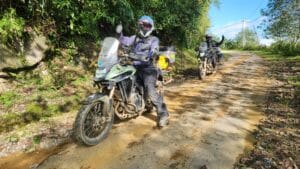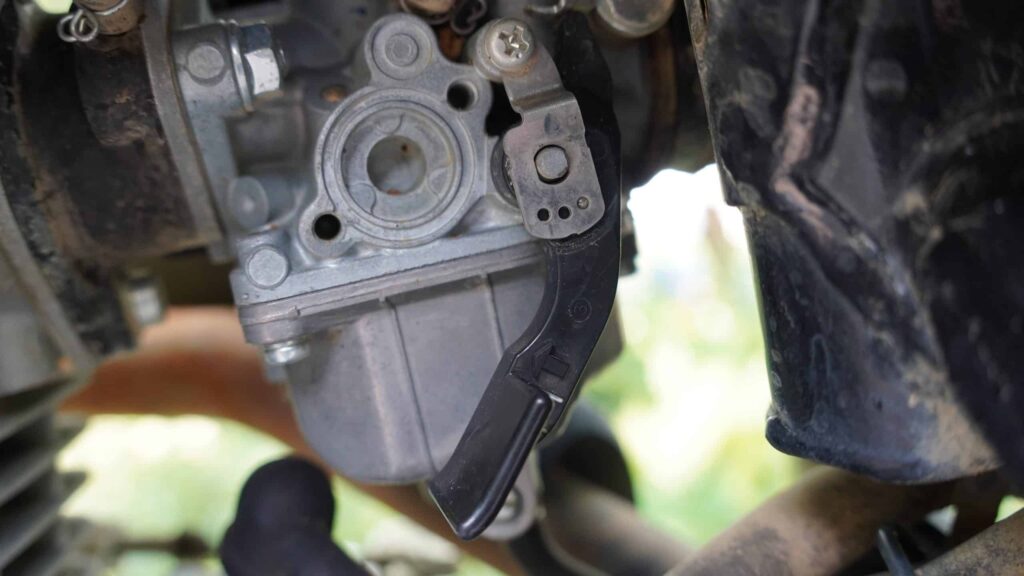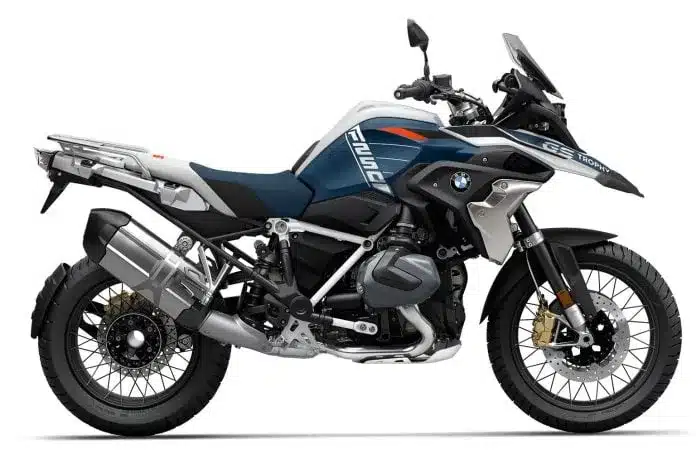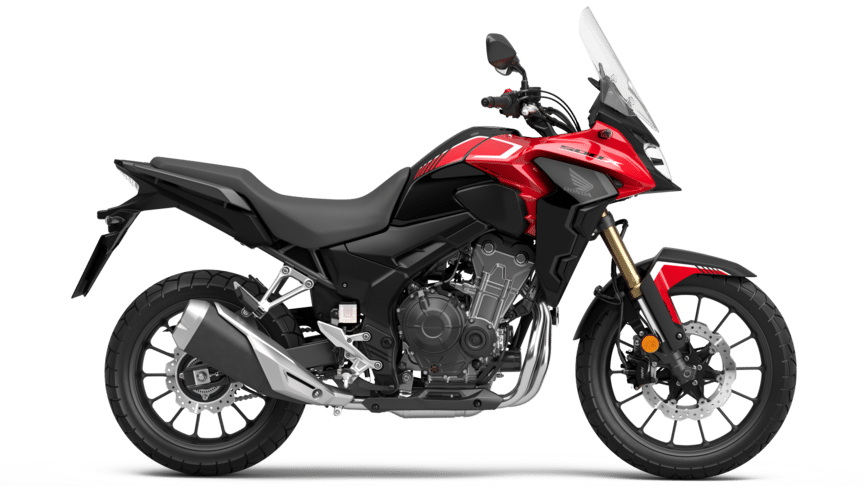
Home » Blog » Motorcycles » Mastering Your XR150L Choke: Your Essential Guide to the Honda XR150L Choke

Are you dreaming of an epic motorcycle touring Vietnam adventure? Picture yourself navigating stunning mountain passes, cruising along coastal roads, and immersing yourself in the incredible culture. For many, the Honda XR150L is the perfect companion for this journey. It’s a reliable, versatile, and beginner-friendly machine that excels on Vietnam’s diverse terrain. We affectionately call it the ‘little buffalo’.
But if you’re new to riding or haven’t used a carburetor motorcycle before, one little lever might seem a bit mysterious: the choke. Fear not! In our latest YouTube video, we break down exactly how and when to use the choke on your XR150L. And here, we’ll dive deeper, offering essential tips for new riders taking one of our quality XR150 rentals Vietnam.
Modern, fuel-injected bikes have largely made the choke a thing of the past. But on carburetor motorcycles like the beloved Honda XR150L, it’s a vital tool for a smooth start, especially when the engine is cold.

Simply put, the choke restricts the amount of air entering the engine, creating a richer fuel-to-air mixture. This richer mixture is easier for a cold engine to ignite, helping it fire up reliably.
You’ll primarily use the choke for cold starts. Think first thing in the morning, after the bike has been sitting for a few hours, or on a cooler day. In the hot Vietnamese climate, you might find you need less choke, or even none at all, if the bike has just been ridden, or if the ambient temperature is high and it usually is.
Here are the steps you need to take to use the Choke correctly:
On most XR150s, it’s deep in the engine space and a little tricky to find. You’ll typically find three positions:
– Fully Down (Off): Your normal riding position.
– Middle (Half Choke): For slightly cool starts.
– Fully Up (Full Choke): For genuinely cold mornings or overnight starts. Image Suggestion: A sequence of three photos: choke fully down, half up, and fully up.
Decide between half or full choke. For a truly cold engine, go for full.
Turn your key to the ‘On’ position.
Get your bike into neutral (the green ‘N’ light on your dash should illuminate). You can double check by rocking the bike back and forth.
Press the starter button. Crucially, do NOT touch the throttle. The choke is doing its job of providing the rich mixture; adding throttle will only flood the engine, which means too much fuel for combustion.

This is vital! Running with the choke on for too long can damage your engine, foul your spark plug, and waste fuel. It is also extremely dangerous because you will find the engine lacks response and acceleration when the fuel mixture is so high.
As soon as the engine starts and settles into a higher idle, begin to gradually push the choke lever down. Listen for the engine to smooth out and the RPMs to drop. If it sputters, push the choke back up slightly, wait a bit longer, then try again. Once it idles smoothly without the choke, you’re good to ride!
Forgetting to turn it off: If your bike feels sluggish, is blowing black smoke, or smells rich, check your choke!
Over-revving with choke on: Let the choke do its work at a steady idle.
Using it when the engine is warm: You generally only need it for cold starts.
Applying throttle during starting: This can flood the engine, making it harder to start.
Now that you’re a choke expert, let’s talk about getting your hands on an XR150L for your motorcycle touring Vietnam adventure!
Whether you’re starting your journey from the bustling capital, Hanoi motorbike rental shops, or other major cities, choosing a reputable rental company is paramount. Here’s what to look for to ensure you get quality XR150 rentals Vietnam:
Reputation and Reviews: Look for companies with strong online reviews, particularly those praising bike condition and customer support. We have great ratings and very happy customers and we frequently come up in discussions about reliable motorcycle rental Vietnam providers.
Well-Maintained Fleet: We maintain our bikes before and after they go on tour. The XR150L sees a lot of action on long tours so this is essential. You are welcome to inspect the bike yourself before signing.
Insurance and Support: Understand what their rental agreement covers. Does it include damage waivers? What kind of roadside assistance is on offer? This is crucial for peace of mind when motorcycle touring Vietnam.
Included Gear: Check what’s included. A quality helmet, luggage rack, and phone holder, are often standard with reputable XR150L rentals. This blog and video shows how we upgrade our Honda XR150Ls
Experience Level: Tell us frankly about your experience level and we will then assist you as needed. Be honest about your skill level to ensure you get the right support.
The Honda XR150L is an incredible machine for exploring Vietnam. Mastering simple techniques like using the choke will make your riding experience smoother and more enjoyable, especially if you’re embarking on your first motorcycle touring Vietnam trip.
So, do your research, make sure you have the right license, and get ready to hit the road. Vietnam by motorbike is an unforgettable adventure waiting to happen!
Daily
Total
Rider (CRF 300)
$220
Pillion
$120
Damage Waiver
$20
Private Room
$40
Support Vehicle*
$150
* All prices given are in USD and apply per rider except for the support vehicle. The support vehicle is free for groups of 7 or more, otherwise the cost is shared across the group.
Daily
Total
Rider (XR 150)
Rider (CRF 300)
Rider (CB 500X)
Rider (GS 1250)
Pillion
$120
Damage Waiver
$20
Private Room
$40
Support Vehicle*
$150
* All prices given are in USD and apply per rider except for the support vehicle. The support vehicle is free for groups of 7 or more, otherwise the cost is shared across the group.
Daily
Total
Jeep (1 PAX)
$210
Jeep (2 PAX)
$120
Jeep (3 PAX)
$90
Jeep (4+ PAX)
$80
Rider (Easy Rider)
$115
Rider (Self-Drive)
$105
Private Room
$15
* Our jeep tour prices operate on a sliding scale. The larger your group, the less each person pays—each member of your group will pay the lowest daily rate shown. For example, if you have a group of 4 or more, you will each only pay $80/day. All prices are given in USD.

Engine Type
air-liquid cooled, twin cylinder, DOHC, boxer engine
Displacement
1255 cc
Bore X Stroke
102.5 mm x 76 mm
Ignition
FI
Fuel System
fuel injection
Compression Ratio
12.5:1
Starter
electric
Gearbox
6-speed
Front Suspension
BMW Motorrad Telelever; stanchion diameter 37 mm
Rear Suspension
single-sided swing arm with BMW Motorrad Paralever
Front Brakes
dual disc brake, floating brake discs, diameter 305 mm, 4-piston radial calipers
Rear Brakes
single disc brake, diameter 276 mm, double-piston floating caliper
Front Tyres
120/70 R19
Rear Tyres
170/60 R17
Wheelbase
1514 mm
Seat Height
850 mm
Ground Clearance
790 mm
Kerb Weight
249 kg
Fuel Capacity
20 litres
Dimensions
2207 mm (L) x 952.5mm (W) x 1430 mm (H)

Engine Type
air cooled, OHC, single cylinder
Displacement
149 cc
Bore X Stroke
57.3 mm x 57.8 mm
Ignition
CDI
Fuel System
20 mm piston valve carburettor
Compression Ratio
9.5:1
Starter
electric with kick starter backup
Gearbox
5-speed
Front Suspension
telescopic fork, 180 mm axle travel
Rear Suspension
single shock swing arm, 150 mm axle travel
Front Brakes
dual piston caliper, 240 mm disc
Rear Brakes
mechanical drum
Front Tyres
90/90 19
Rear Tyres
110/90 17
Wheelbase
1362 mm
Seat Height
825 mm
Ground Clearance
243 mm
Kerb Weight
129 kg
Fuel Capacity
12 litres
Dimensions
2091 mm (L) x 811 mm (W) x 1125 mm (H)

Engine Type
liquid cooled parallel-twin four stroke
Displacement
470 cc
Bore X Stroke
67 mm x 66.8 mm
Ignition
PGMI – FI
Fuel System
fuel injection
Compression Ratio
10.7:1
Starter
electric
Gearbox
6-speed
Front Suspension
41 mm SFF-BP USD Forks
Rear Suspension
Prolink Mono with 5 stage pre load adjuster
Front Brakes
dual 296 mm discs with 4 piston calipers; ABS
Rear Brakes
240 mm disc; ABS
Front Tyres
110/80R19M/C (59H)
Rear Tyres
160/60R17M/C
Wheelbase
1445 mm
Seat Height
830 mm
Ground Clearance
180 mm
Kerb Weight
199 kg
Fuel Capacity
17.7 litres
Dimensions
2,155 mm (L) x 830 mm (W) x 1,410 mm (H)

Engine Type
single cylinder, DOHC, liquid cooled
Displacement
286 cc
Bore X Stroke
76 mm x 63 mm
Ignition
Full Transistor Digital
Fuel System
PGM-FI electronic fuel injection
Compression Ratio
10.7:1
Starter
electric
Gearbox
5-speed
Front Suspension
43 mm telescopic upside down
Rear Suspension
Prolink Mono with 5 stage pre load adjuster
Front Brakes
Rear Brakes
220 mm disc, single piston caliper
Front Tyres
80/100 21
Rear Tyres
120/80 18
Wheelbase
1455 mm
Seat Height
880 mm
Ground Clearance
285 mm
Kerb Weight
142 kg
Fuel Capacity
7.8 litres
Dimensions
2230 mm (L) x 820 mm (W) x 1200 mm (H)
Daily
Total
Rider (CRF 300)
$200
Pillion
$120
Damage Waiver
$20
Private Room
$40
Support Vehicle*
$150
* All prices given are in USD and apply per rider except for the support vehicle. The support vehicle is free for groups of 7 or more, otherwise the cost is shared across the group.